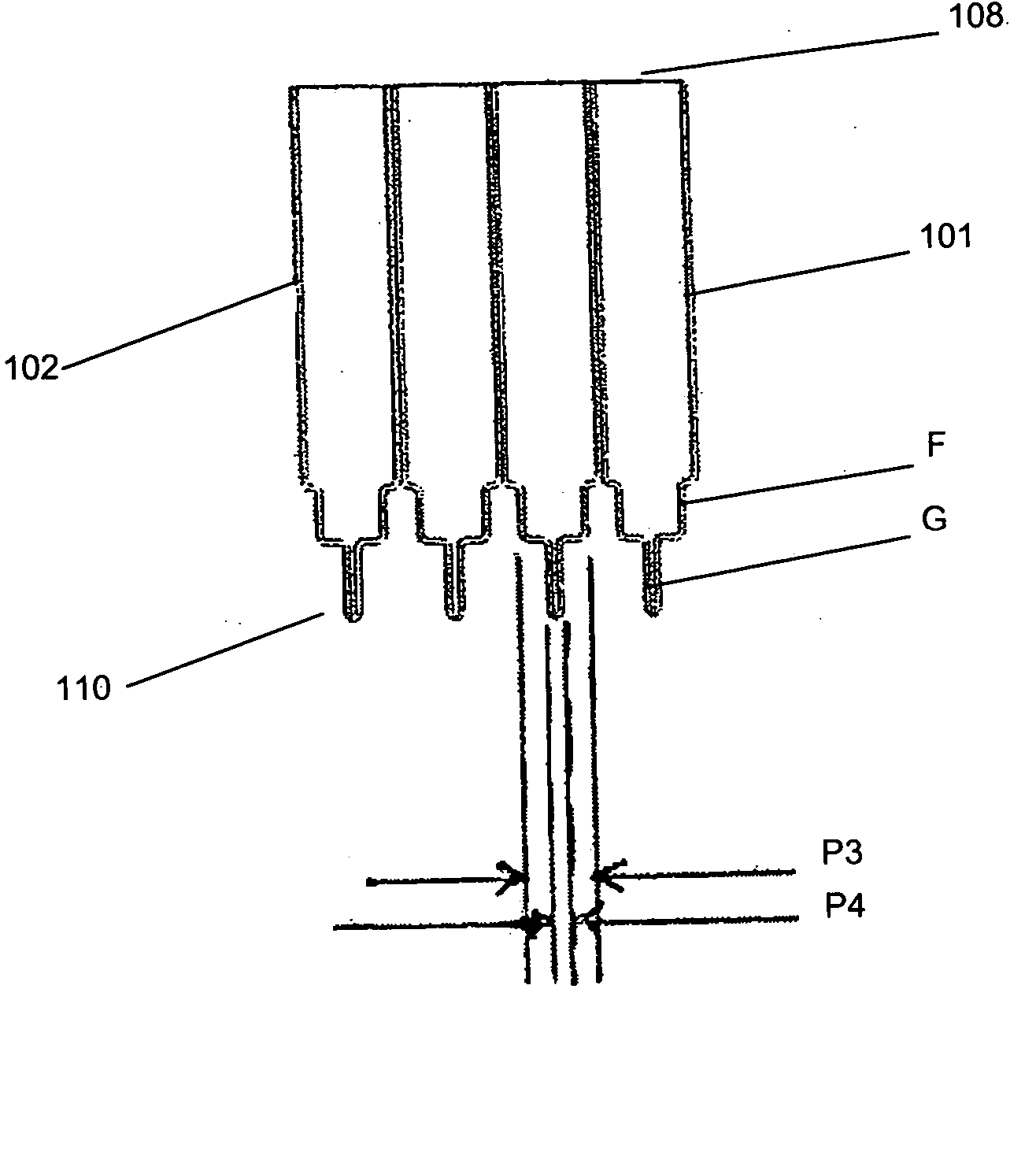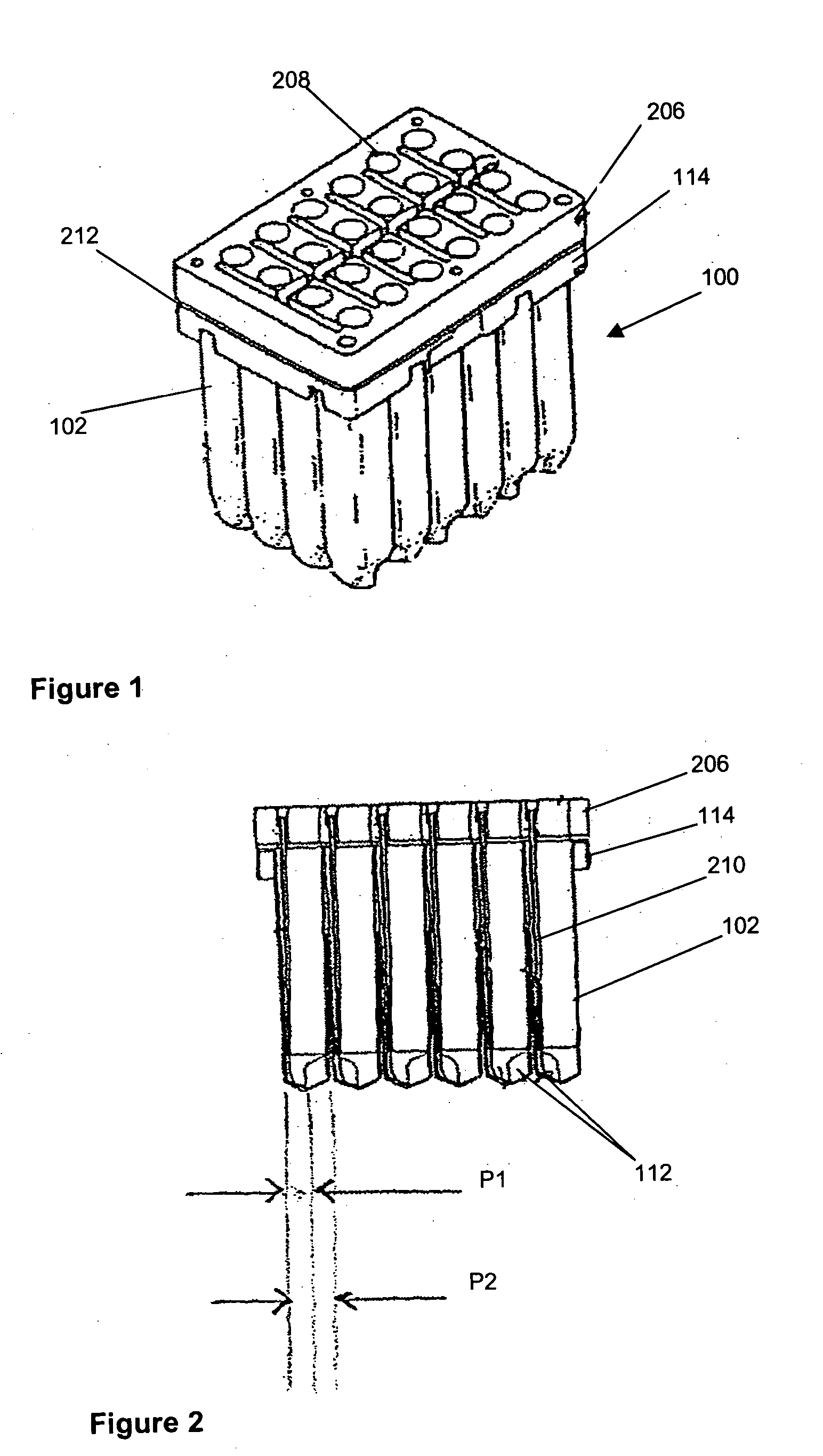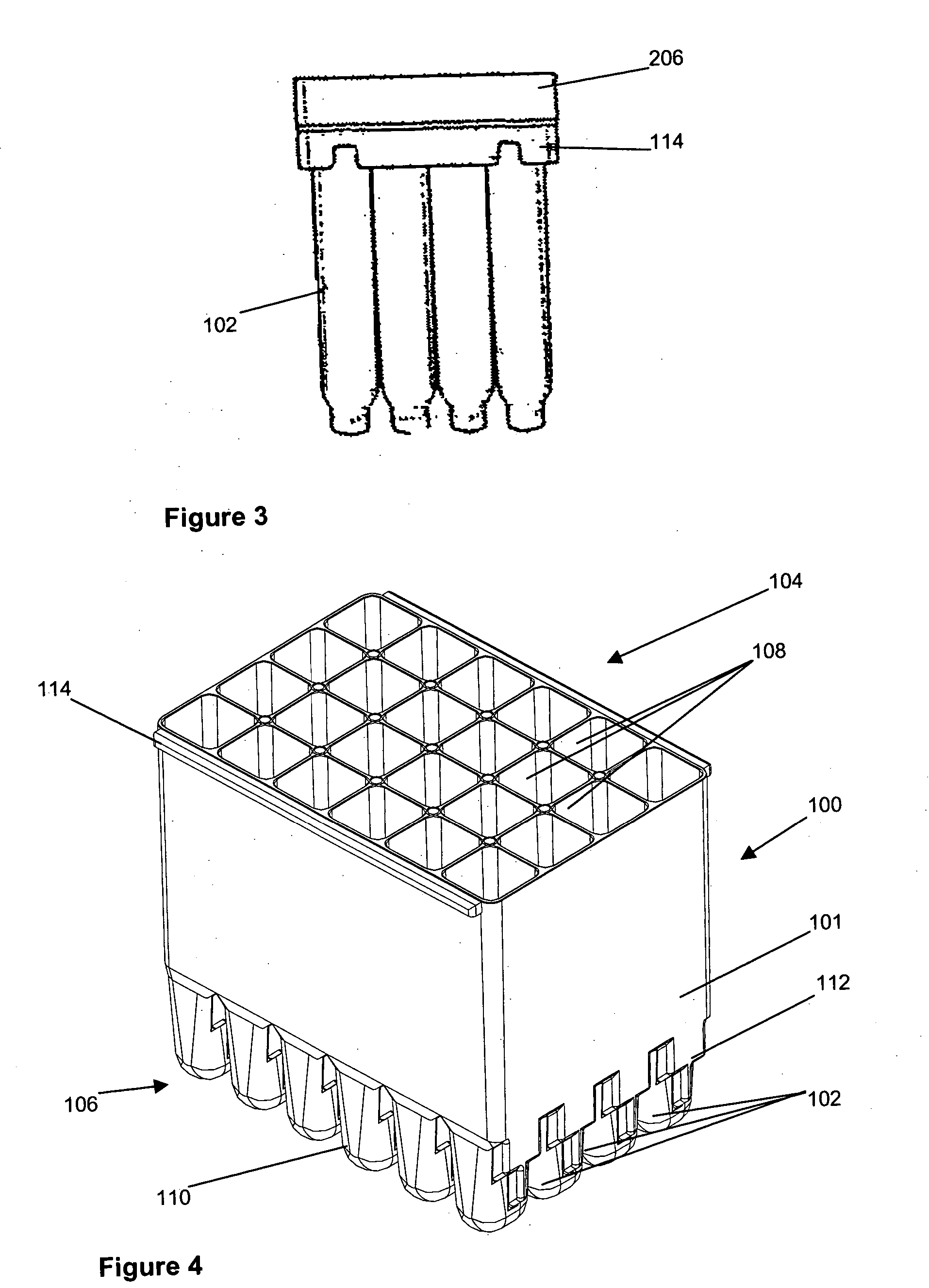Cell culture vessel for the automated processing of cell cultures
a cell culture and automated processing technology, applied in the field of cell culture vessels, can solve the problems of large impact on the quality and quantity of target protein produced, stability, and non-generally required genes for the production of target proteins, and achieve good fluid flow through the entire vessel
- Summary
- Abstract
- Description
- Claims
- Application Information
AI Technical Summary
Benefits of technology
Problems solved by technology
Method used
Image
Examples
Embodiment Construction
[0029] Referring now to FIGS. 1 to 3 and initially to FIG. 1, there is shown an embodiment of cell culture vessel assembly 100. The cell culture vessel assembly which is formed by injection moulding comprises a substantially rectangular shaped block 101 of 24 identical culture vessels 102 having an open end 104 and a closed end 106.
[0030] Each culture vessel 102 is generally in the shape of a rectangular cylinder having an open end 108 and a round closed end 110. The open and closed ends 108, 110 correspond to the open and closed ends 104, 106 of the culture vessel block 101. Each culture vessel 102 has a recessed portion 112 at the closed end 110. The recessed portion 112 generally extends from one side wall of the vessel 102 to midway towards an opposing side wall. This is shown most clearly in FIG. 2. The recessed portion 112 provides a light path length P1 across the culture vessel 102 for sensitive measurement of the OD of the culture when the OD of the culture in the vessel 1...
PUM
| Property | Measurement | Unit |
|---|---|---|
| transparent | aaaaa | aaaaa |
| optical density | aaaaa | aaaaa |
| physical | aaaaa | aaaaa |
Abstract
Description
Claims
Application Information
 Login to View More
Login to View More - R&D
- Intellectual Property
- Life Sciences
- Materials
- Tech Scout
- Unparalleled Data Quality
- Higher Quality Content
- 60% Fewer Hallucinations
Browse by: Latest US Patents, China's latest patents, Technical Efficacy Thesaurus, Application Domain, Technology Topic, Popular Technical Reports.
© 2025 PatSnap. All rights reserved.Legal|Privacy policy|Modern Slavery Act Transparency Statement|Sitemap|About US| Contact US: help@patsnap.com



